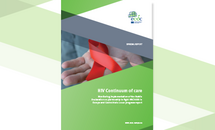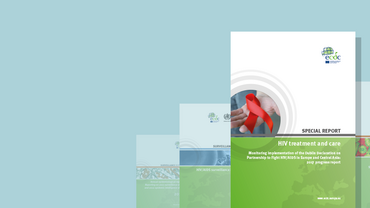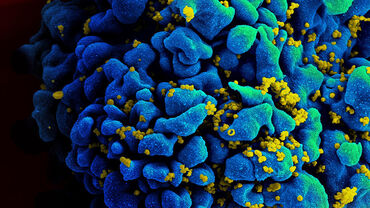HIV Continuum of care - Monitoring implementation of the Dublin Declaration on partnership to fight HIV/AIDS in Europe and Central Asia: 2020 progress report
In 2020, 40 out of 55 countries in Europe and Central Asia provided the latest available data on all four stages of the continuum of HIV care (compared to 34 countries in 2018). A total of 45 countries were able to provide data for at least two consecutive stages of the continuum of HIV care (compared to 42 in 2018).
Executive Summary
In 2020, using data from countries able to provide at least two consecutive stages of the continuum, the overall performance of the European and Central Asian region against the global 90-90-90 targets is 82% of all PLHIV with HIV diagnosed, 67% of those diagnosed with HIV on treatment and 90% of those on treatment virally suppressed. More progress is needed to meet the substantive target of 73% of all PLHIV being virally suppressed, with performance for the overall region at 50% (based on the countries that submitted data for all four stages of the continuum).
Substantial variation exists for each element of the continuum, both between and within European and Central Asian sub-regions. Overall, the West sub-region has met all three of the global 90-90-90 targets, with 90% of all PLHIV diagnosed, 93% of people living with diagnosed HIV on treatment, and 93% of those on treatment virally suppressed. Overall, the Centre sub-region is performing at 87%, 78% and 81% and the East sub-region is performing at 78%, 50%, and 87% respectively. The West sub-region, performing at 78% overall, has also met the global substantive target of having 73% of all PLHIV virally suppressed, while the Centre and East subregions are at 55% and 33% respectively and still have a great deal of overall progress to make.
Based on information from the 34 countries that reported all four stages of the continuum in both 2018 and 2020, there has been some progress towards meeting the global substantive targets. Overall, for these countries, in 2020, 82% of all PLHIV were diagnosed, 55% of all PLHIV were on treatment and 49% of all PLHIV were virally suppressed. This compares to 80%, 51% and 43% respectively in 2018. Each sub-region also showed improvements in the outcomes for the continuum of care in 2020 compared to 2018. The greatest improvement occurred in the East sub-region in the proportion of all PLHIV who are virally suppressed, with an increase from 26% in 2018 to 33% in 2020 among the 10 countries in the East subregion able to report data in both years.
The number of people with transmissible levels of virus can be calculated by adding the number of PLHIV who are estimated to be undiagnosed, diagnosed but untreated and treated but not virally suppressed. Using data from the countries that provided all four stages of the continuum, this is estimated to be 1 112 593
PLHIV in those reporting countries, or equivalent to 50% of all PLHIV.
Of the people living with transmissible levels of virus in 2020, 35% were estimated to be undiagnosed, 54% were estimated to be diagnosed but untreated and 11% were estimated to be on treatment but with an unsuppressed viral load. This indicates that the greatest impact in reducing the number of people with transmissible levels of virus could be achieved through rapid and sustained scale-up of treatment, along with widespread implementation of combination prevention, including further efforts to increase HIV testing.







